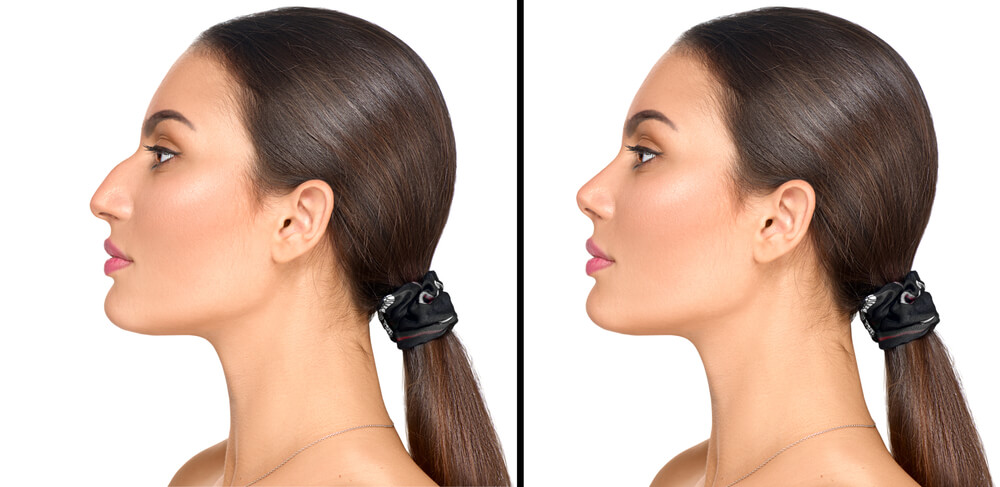Straightening crooked noses is one of the most difficult tasks in rhinoplasty. Crooked noses can occur for many different reasons. These include prior trauma or asymmetric nasal growth.
Deformities can be broken down into two major categories. These include bony deviations (upper half of the nose), and cartilage deviations (lower half of the nose). Bony deviations can frequently be corrected with osteotomies or creating controlled fractures in the nasal bones and shifting them back to the midline.
Deviations of the cartilaginous part of the nose (lower half of the nose) tend to more complex and more difficult to correct. Many of the deviations of the lower third of the nose involve deviations of the underlying nasal septum. In some cases less complex surgeries can correct deviations of the lower half of the nose. However, the incidence of failure is higher when an operation does not successfully straighten a deviated septum. Nasal function is also maximized by creating a straight nasal septum. My intent with deviated noses is to create a straight nose but also to straighten the nasal septum to maximize nasal function.
The method that I use to correct more severe deviations of the cartilaginous portion of the nose involves disassembling the lower third of the nose, straightening or replacing the septum and then putting the nose back together in the midline. Unfortunately, this is a more complex operation and may require additional cartilage grafting material. In fact we will frequently use costal cartilage (rib cartilage) in more severe cases or when correcting previous operated noses that remain deviated. Patients who have not undergone previous surgery may be able to be corrected using their existing septal cartilage for reconstruction. However, in many cases I will actually remove and replace the deviated or damaged septum and replace it with a new straight structure that will allow placement of the nose in the midline. This is a more complex operation and takes up to 5 or 6 hours. However, the success rate in getting the nose straight is much higher when the underlying septum is straight. Few surgeons choose to perform this type of surgery as it is very time consuming and complex. When I operate on a nose I take as much time that is necessary to create the intended result, and my success rate with deviated noses is excellent.

If the septum is not straightened and well supported the nose will initially look straighter and then tend to deviate with the passage of time. The nasal breathing may also become restricted with time as the septum deviates. This can be very frustrating to the patient as he or she may initially think that the nose was fixed. Early on swelling will hide deviations that can become more evident with the passage of time. It is important to keep in mind that getting a nose perfectly straight is very difficult. Most noses are significantly improved and may have a residual minor deviation or asymmetry. The frontal view of your nose is by far the most difficult view to make symmetric. This is because when light strikes your nose it casts shadows and these shadows are what makes the nose look asymmetric. I spend a great deal of time working on the frontal view at the time of surgery because I know that it is this view that is the most difficult to make symmetric.
Some surgeons will recommend injecting the nose with filler materials to help correct asymmetries or residual deviations. I do not recommend this type of management unless the patient has no intent on undergoing any revision surgery. Such injections can become infected and more importantly they create increased scarring that can compromise the success of any future revision surgeries. I have turned away numerous patients for secondary rhinoplasty because of previous injections with fillers. Permanent fillers are the most damaging whereas temporary fillers (Restylane or Juvederm) will resorb after 8 to 12 months. If permanent fillers are used the skin of the nose is permanently altered making it exponentially more difficult to get a smooth nasal contour. With permanent fillers the skin can be permanently damaged to the point that it is infected, discolored, irregular or permanently damaged. Unfortunately, I have seen many of these problems since injectable fillers have been used.

